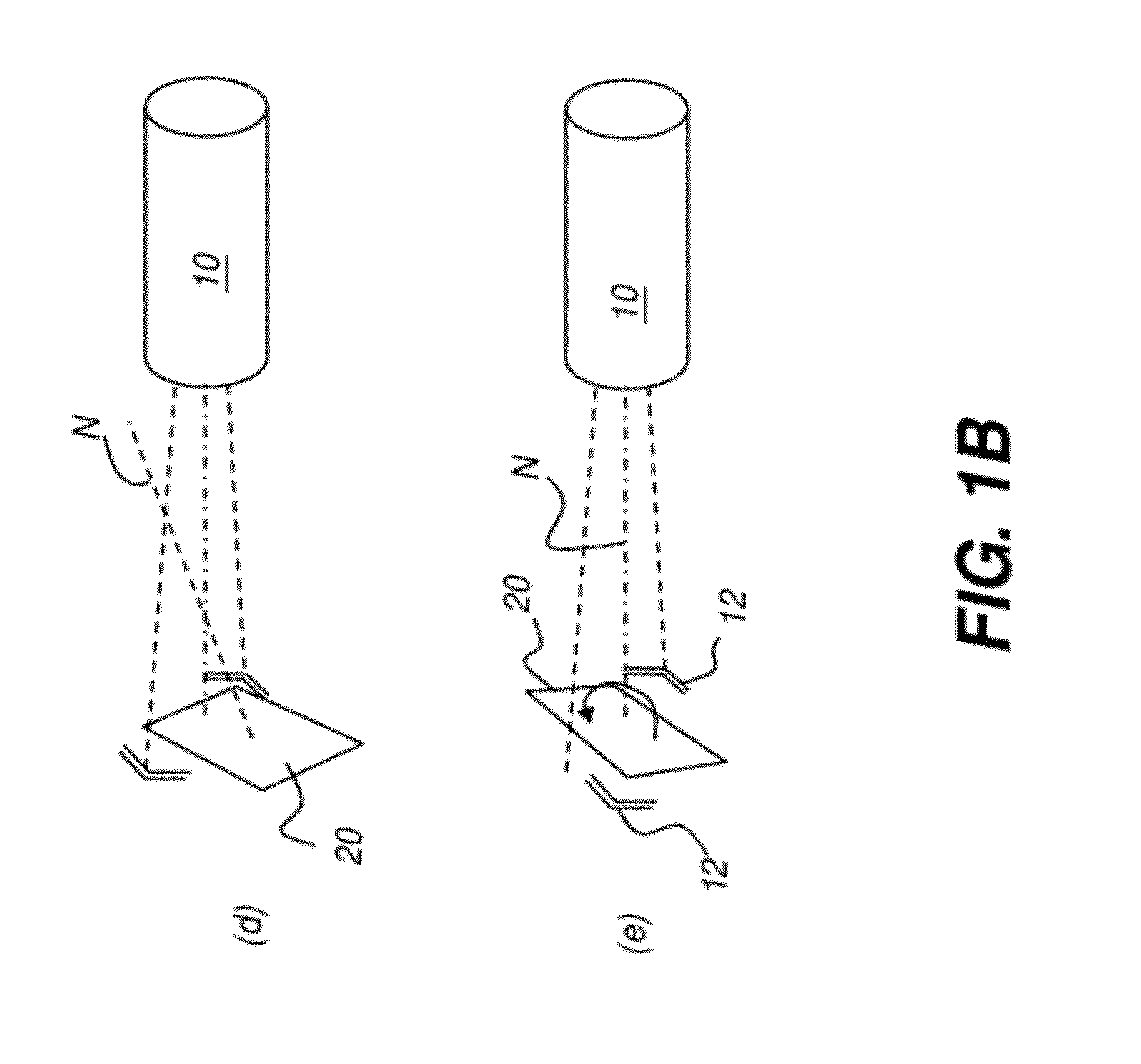Method for generating an intraoral volume image
a volume image and volume technology, applied in the field of diagnostic imaging, can solve the problems of inability to use cbct system in an operative or treatment setting, inability to provide reliable and precise volume imaging, and high cost of cbct gantry for dental imaging, etc., to advance the art of intraoral radiography
- Summary
- Abstract
- Description
- Claims
- Application Information
AI Technical Summary
Benefits of technology
Problems solved by technology
Method used
Image
Examples
Embodiment Construction
[0027]The following is a detailed description of the preferred embodiments of the invention, reference being made to the drawings in which the same reference numerals identify the same elements of structure in each of the several figures.
[0028]In the present disclosure, the term “detector” refers to the element that is placed in the patient's mouth, receives radiation, and provides the image content. Such a detector is a digital detector that provides the x-ray image data directly to an imaging system.
[0029]Detector alignment can be difficult for dental or intraoral radiography. The detector position is within the patient's mouth and is not visible to the technician. Instead, the technician typically places the detector into some type of holder, and then inserts the holder into place in the mouth. The holder may have a bite plate or other type of supporting member that helps to position the detector appropriately. Holders of this type can be cumbersome and uncomfortable to the patie...
PUM
 Login to View More
Login to View More Abstract
Description
Claims
Application Information
 Login to View More
Login to View More - R&D
- Intellectual Property
- Life Sciences
- Materials
- Tech Scout
- Unparalleled Data Quality
- Higher Quality Content
- 60% Fewer Hallucinations
Browse by: Latest US Patents, China's latest patents, Technical Efficacy Thesaurus, Application Domain, Technology Topic, Popular Technical Reports.
© 2025 PatSnap. All rights reserved.Legal|Privacy policy|Modern Slavery Act Transparency Statement|Sitemap|About US| Contact US: help@patsnap.com



